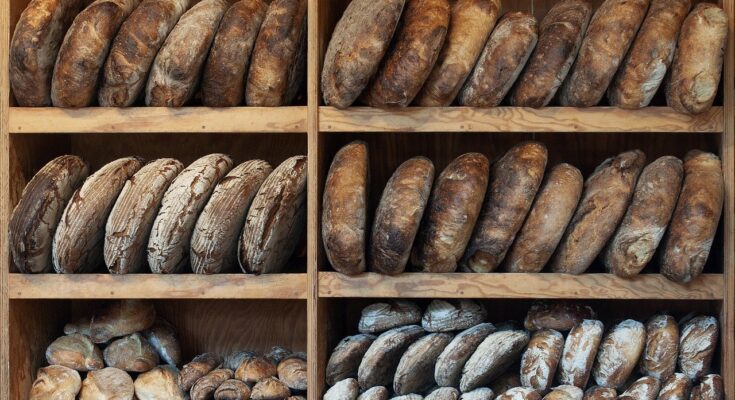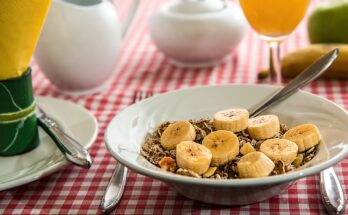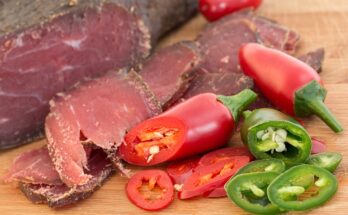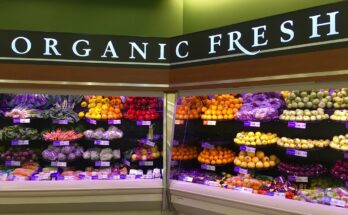Are you curious about how food stays fresh for extended periods? Look no further than the role of food processing in creating long shelf-life products. Thanks to various techniques, your favorite foods can be preserved and enjoyed long after they are harvested or cooked.
Canning is one such method, where food is sealed in airtight containers, preserving its flavor and nutrients.
Freezing is another popular technique, maintaining freshness and quality by slowing down the growth of bacteria.
Drying, on the other hand, removes moisture from food, preventing spoilage and extending its shelf life.
Pasteurization plays a crucial role as well, as it effectively kills harmful bacteria, making food safer to consume.
Lastly, packaging plays a vital role in protecting and preserving food products, ensuring they reach you in perfect condition.
So next time you enjoy a meal that has a long shelf life, remember the essential role of food processing in making it possible.
Canning: Preserving Food for Extended Periods
If you want to ensure that your food stays fresh for an extended period of time, canning is the way to go. Canning is a food preservation method that involves sealing food in airtight containers, such as jars, and then heating them to kill any bacteria or microorganisms that could cause spoilage. This process effectively extends the shelf life of the food, allowing you to enjoy it long after it would’ve otherwise gone bad.
The preservation of food through canning has been practiced for centuries and has proven to be highly effective. It allows you to stock up on seasonal produce and enjoy it throughout the year. Canned foods are convenient, easy to store, and can be enjoyed in various dishes, making them a practical choice for anyone looking to maintain a well-stocked pantry.
Freezing: Maintaining Freshness and Quality
To keep your favorite foods fresh and delicious for a longer period of time, freezing is the ultimate solution. Freezing is a popular method of food preservation that helps maintain the freshness and quality of various food products.
By freezing food, you can slow down the growth of bacteria, yeast, and mold, which are responsible for spoilage. The low temperatures effectively inhibit their growth, keeping your food safe to eat for a longer time.
Freezing also helps to preserve the texture, flavor, and nutritional value of the food. When properly frozen and stored, fruits, vegetables, meats, and even baked goods can retain their taste and quality for months.
With the convenience of freezer bags and containers, freezing has become an easy and accessible way to extend the shelf life of your favorite foods.
Drying: Removing Moisture for Longer Shelf Life
You can easily extend the freshness of your favorite foods by removing moisture through the process of drying. Drying is a food processing method that has been used for centuries to preserve various types of food. By eliminating the water content in food, the growth of bacteria, yeast, and mold is inhibited, resulting in longer shelf life.
Drying can be done using different techniques such as air drying, sun drying, or using specialized equipment like food dehydrators. This process not only extends the shelf life of food but also concentrates its flavor and nutrients. Dried foods are lightweight, making them convenient for storage and transportation. They can be rehydrated later for consumption or used as ingredients in various recipes.
So, next time you want to preserve your favorite fruits, vegetables, or even meats, consider drying them for a longer-lasting and flavorful option.
Pasteurization: Killing Harmful Bacteria
Ensure the safety of your loved ones by pasteurizing your food, a process that eliminates harmful bacteria and brings peace of mind to every meal. Pasteurization is a crucial step in food processing that involves heating the product to a specific temperature for a set period of time.
This kills harmful bacteria, such as E. coli and Salmonella, that can cause foodborne illnesses. By eliminating these pathogens, pasteurization extends the shelf life of various food products, including milk, juice, and canned goods. The process also helps to maintain the nutritional value and taste of the food.
Whether you’re consuming dairy products or enjoying a refreshing glass of juice, pasteurization ensures that your food is safe and free from harmful bacteria, allowing you to savor each bite without worrying about potential health risks.
Packaging: Protecting and Preserving Food Products
When it comes to packaging, you’ll be amazed at how it can protect and maintain the freshness of your favorite foods. Packaging plays a crucial role in extending the shelf life of food products. It acts as a barrier against physical, chemical, and biological factors that can spoil or contaminate the food.
The packaging materials used are designed to provide an airtight seal, preventing oxygen from entering and causing spoilage. Additionally, packaging helps to maintain the proper temperature and humidity levels, which are essential for preserving food quality. It also protects against light exposure, which can degrade nutrients and cause discoloration.

Moreover, packaging allows for convenient storage and transportation, ensuring that the food remains intact and unharmed during the distribution process. In conclusion, packaging is an essential component in creating long shelf-life products by safeguarding their freshness and quality.
Conclusion
In conclusion, food processing plays a crucial role in creating long shelf-life products. By using techniques such as canning, freezing, drying, pasteurization, and packaging, food can be preserved for extended periods while maintaining freshness, quality, and safety.
These methods allow consumers to have access to a wide variety of food options throughout the year, reducing waste and ensuring a stable food supply.
So next time you enjoy a canned or frozen meal, remember the important role food processing plays in making it possible.




